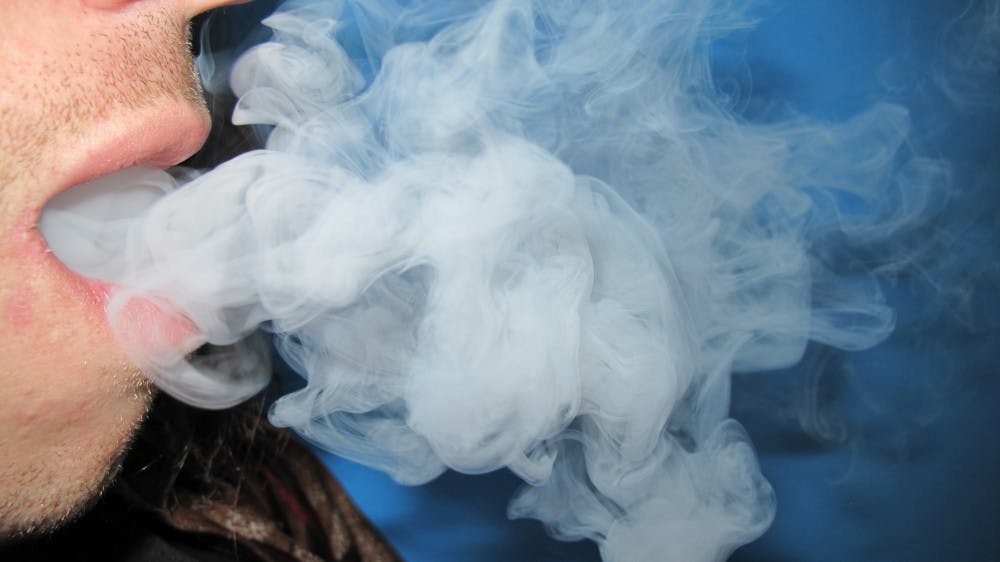As vaping-related deaths continue to rise in the United States, the Centers for Disease Control and Prevention (CDC) announced Thursday, Sept. 26 that there were 805 confirmed cases of lung injury cases in the U.S. as a result of vaping, including 12 confirmed deaths.
While the CDC reported that the specific chemical exposures causing lung injuries associated with electronic cigarettes are unknown at this time, a recent study by the Journal of Clinical Investigation (JCI) found vaping to impair lung function even in the absence of nicotine.
"When you put non-natural products into the lungs, the immune cells try to get rid of them and can’t," said Matthew Campen, a professor in the Department of Pharmaceutical Sciences at the University of New Mexico. Campen holds a doctorate in Environmental Health and was a researcher in the JCI study.
Campen and his colleague’s research, published in the JCI’s September issue, found that even in the absence of nicotine, vaping still impairs lung function due to other ingredients found in vape liquid. Campen explained that it is possible that THC and CBD are also playing a role in the recent lung injuries, but researchers don’t know for sure.
"We know that THC and CBD are immunosuppressive. It could be that what we are seeing is a synergy between the e-liquid and the THC extraction. We just don’t know," Campen said. "Nobody has been able to research this. It’s a stupid political decision that (THC) is a Schedule I drug — researchers don’t have the ability to do the research."
Unlike cigarettes — which are associated with lung cancers that can take decades to develop — vaping is being associated with the more immediate health problems of pneumonias, lung injuries and immunosuppression of the lung tissue, according to Dr. Barbara McAneny. McAneny is an Albuquerque-based oncologist and the immediate past president of the American Medical Association.
"We are starting to see deaths now that are directly related to vaping, while it takes 20 years for traditional cigarettes to kill you," McAneny told the Daily Lobo.
Though the cause of what makes vaping unsafe is still unclear, McAneny asserted that there is no doubt vaping is unsafe, especially for young people. According to a recent study in the New England Journal of Medicine, vaping among college students for nicotine rose from 6% in 2017 to 16% in 2018.
"They say they are only trying to market to existing smokers," McAneny said. "(But) it is a reasonable assumption (that they are using flavors like bubble-gum) to make it more attractive to middle school (students), more than even high school."
McAneny said the vaping industry specifically targets young users, adding that evidence shows establishing a dependence before the brain is fully developed is more likely to result in a lifelong addiction.
"(The) CDC's fear mongering statement," Tony Abboud, Executive Director of the Vapor Technology Association (VTA), said in a press release, "is misguided and will only cause further harm to overall public health."
The VTA is a lobbying organization dedicated to safeguarding the business interests of the manufacturers, wholesalers, small business owners and entrepreneurs in the vaping industry.
Get content from The Daily Lobo delivered to your inbox
This article is part one of a two-part series on vaping.
Amanda Britt is the photo editor at the Daily Lobo. She can be reached at photoeditor@dailylobo.com or on Twitter @AmandaBritt_
Lissa Knudsen is a beat reporter at the Daily Lobo. She can be reached at news@dailylobo.com or on Twitter @lissaknudsen






